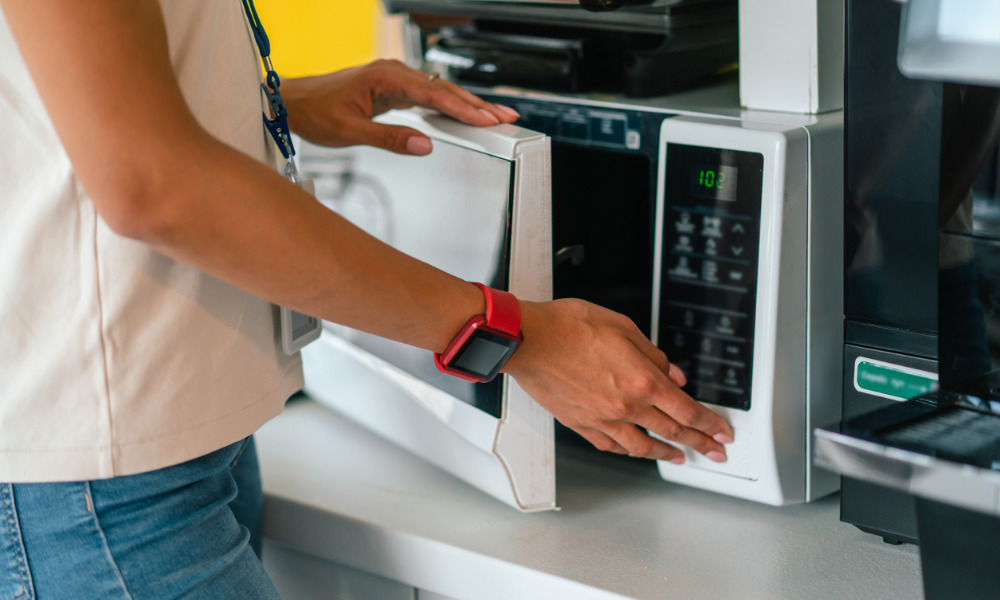As many people return to the office, an old problem returns to the fore

As people return to the office chances are they will be storing food, cooking, and eating in the workplace more often. Eating is an essential part of daily life, making it east to overlook the safety risks and hazards that come with food storage, preparation, and consumption.
Here we outline five rules that every workplace can implement to ensure employees do not suffer an illness or cause injury to themselves or others while keeping their bellies full.
- Shopping and storage
The US Department of Agriculture (USDA) suggests while shopping it is best to select frozen items after grabbing the non-perishables. It also says to avoid any meat or poultry that has a torn package or is leaking. You should also check the best before or expiration dates to make sure the items are not going bad. The Occupational Safety Group (OSG) says raw food should be placed at the bottom of the refrigerator in case it thaws. This way it won’t drip onto other foods. Raw food should be kept separate from cooked foods to avoid cross-contamination. The OSG says if raw food is spilled or encounters cooked food it should be cleaned up and the cooked food should be discarded.
- Handling & Preparation
Frequent hand washing is always recommended, especially when handling different types of food items. The USDA says, “always wash hands with soap and warm water for 20 seconds before and after handling food.” The food items also need to be washed depending on what it is. OSG suggests washing most fresh fruits, vegetables, salads, and spinach. “Washing produce ensures that harmful pesticides or raw food bacteria are removed before consumption,” says OSG. When it comes to proteins, raw items should always be kept separate, and the USDA says surfaces used for cutting should be washed with soapy water once the meats have been portioned out. If meat is being marinated and left in the fridge, it should be covered by a dish. Food handling became a major safety concern during the pandemic, and those best practices should still be applied in the workplace.
- Cooking
Cooking in an office setting presents several possible hazards, the most obvious being fire. “If your work has a microwave, be sure to keep it clean and free of debris,” says OSG, which also suggests covering food while it is being heated in the microwave to avoid splattering. “If your work has a barbecue and hosts cook-outs for staff, ensure that meat is grilled to the appropriate internal temperatures,” suggests OSG and says a food thermometer should be used. A list of cooking temperatures can be found here.
- Cleaning up
Work fridges can often be overlooked during regular routine cleaning. The OSG says it is good practice to clean it out from time to time, while warning workers in advance their leftovers may be tossed in the garbage. “Removed outdated products, questionable looking items, and any Tupperware that looks like it contains a science experiment,” explains OSG. Additionally, all eating areas should be cleaned up and wiped down following a meal. Don’t leave crumbs and bits of food lying around, or your coworkers might think you’re a slob.
- Leftovers
The UDA says any food left out at room temperature for more than two hours should be tossed in the garbage. If the temperature was above 90 degrees Fahrenheit, then it can only sit out for one hour. It says food should be placed in shallow containers and put in the refrigerator or freezer. Most cooked leftovers should be eaten within 3 to 4 days. OSG says all leftovers should be packaged up separately, “to avoid harmful bacteria growth after a pot-luck lunch.”
Staying food safe at work in a post-pandemic life can’t be understated and is easily overlooked. Health and safety professionals will want to remind employees about best practices surrounding cooking and eating while in the office.





